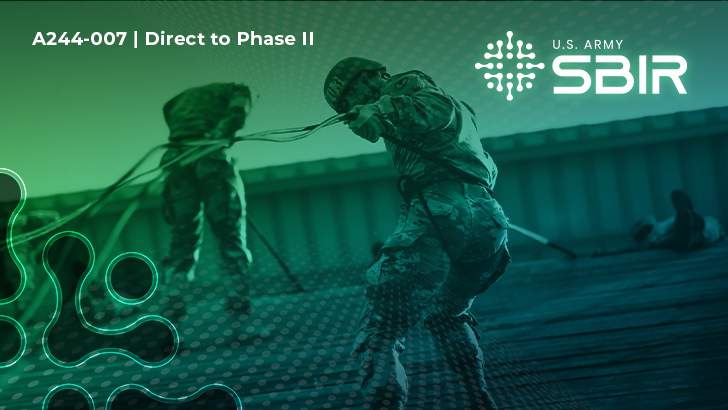

Direct to Phase II Selectees
Objective
The U.S. Army Reserve recognizes and seeks to identify challenges throughout the mobilization process to create efficiencies and better support the needs of combatant commanders. The USAR must mobilize and equip Soldiers quickly to support combatant commanders worldwide in the event of Large-Scale Combat Operations (LSCO) through Large-Scale Mobilization Operations.
Description
Lengthened Soldier mobilization timelines from the reserve component into active-duty roles affect the readiness of Army units preparing to deploy. This ramp-up period impacts the timeliness of the support needed for combatant commanders to conduct operations.
USAR leadership continues to explore opportunities to bolster the efficiency of existing processes within LSMO by evaluating the outcomes from past mobilization training exercises, and receiving insight from subject matter experts on how each process operates.
Using this research, the USAR seeks to enhance the mobilization process, increasing the overall readiness and support for combatant commanders for LSCO. The program will share its findings with Army National Guard partners to support sister service processes.
Phase I
The solicitation is a Direct to Phase II effort.
Phase II
Direct to Phase II: The program firmly grounds its DP2 transition approach in technical feasibility and a proven concept, with practical solutions already in place and validated through an equivalent Phase I effort. In a direct-to-Phase II (DP2) transition context, a mathematical framework establishes the technical feasibility and proof-of-concept work associated with a Phase I effort. During Phase I, companies receive rigorous assessments of their proposed solutions’ viability and technical feasibility. Academic institutions recognize and support evaluations such as the validation of deterministic and stochastic modeling techniques, which researchers often couple with widely used tools like Python and RStudio.
Researchers have rigorously studied and assessed these techniques, highlighting their effectiveness through real-world implementation across various academic and industrial settings. One of the key strengths lies in their practical application, as evidenced by the successful creation of deterministic activity networks that comprehensively capture the essential structural elements of complex processes such as mobilization. Stochasticity has also strengthened the models, making them more adaptable and resilient in the face of uncertainty.
This widespread validation and practical demonstration affirm the robustness and versatility of these techniques, making them valuable assets in addressing complex challenges like mobilization processes in academic and real-world contexts. Furthermore, the USAR actively adopting the Department of Defense product Advancing Analytics, and the existing installation of RStudio on USAR computers, underscore the practicality and readiness of this approach. This demonstrates the ease of implementation and compatibility with the organization’s operational environment.
Phase III
Submission Information

References:
Direct to Phase II Selectees
Objective
The U.S. Army Reserve recognizes and seeks to identify challenges throughout the mobilization process to create efficiencies and better support the needs of combatant commanders. The USAR must mobilize and equip Soldiers quickly to support combatant commanders worldwide in the event of Large-Scale Combat Operations (LSCO) through Large-Scale Mobilization Operations.
Description
Lengthened Soldier mobilization timelines from the reserve component into active-duty roles affect the readiness of Army units preparing to deploy. This ramp-up period impacts the timeliness of the support needed for combatant commanders to conduct operations.
USAR leadership continues to explore opportunities to bolster the efficiency of existing processes within LSMO by evaluating the outcomes from past mobilization training exercises, and receiving insight from subject matter experts on how each process operates.
Using this research, the USAR seeks to enhance the mobilization process, increasing the overall readiness and support for combatant commanders for LSCO. The program will share its findings with Army National Guard partners to support sister service processes.
Phase I
The solicitation is a Direct to Phase II effort.
Phase II
Direct to Phase II: The program firmly grounds its DP2 transition approach in technical feasibility and a proven concept, with practical solutions already in place and validated through an equivalent Phase I effort. In a direct-to-Phase II (DP2) transition context, a mathematical framework establishes the technical feasibility and proof-of-concept work associated with a Phase I effort. During Phase I, companies receive rigorous assessments of their proposed solutions’ viability and technical feasibility. Academic institutions recognize and support evaluations such as the validation of deterministic and stochastic modeling techniques, which researchers often couple with widely used tools like Python and RStudio.
Researchers have rigorously studied and assessed these techniques, highlighting their effectiveness through real-world implementation across various academic and industrial settings. One of the key strengths lies in their practical application, as evidenced by the successful creation of deterministic activity networks that comprehensively capture the essential structural elements of complex processes such as mobilization. Stochasticity has also strengthened the models, making them more adaptable and resilient in the face of uncertainty.
This widespread validation and practical demonstration affirm the robustness and versatility of these techniques, making them valuable assets in addressing complex challenges like mobilization processes in academic and real-world contexts. Furthermore, the USAR actively adopting the Department of Defense product Advancing Analytics, and the existing installation of RStudio on USAR computers, underscore the practicality and readiness of this approach. This demonstrates the ease of implementation and compatibility with the organization’s operational environment.
Phase III
Submission Information
References:
